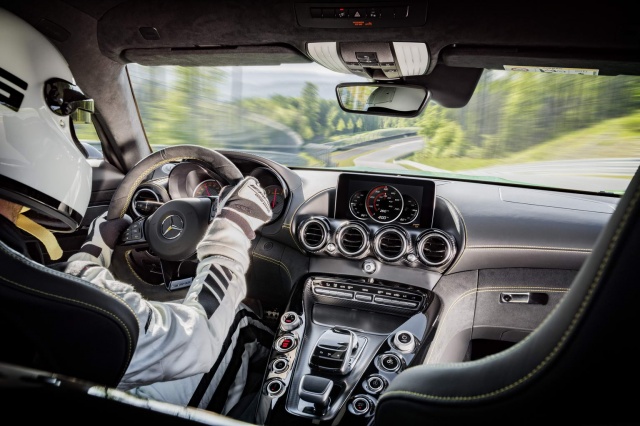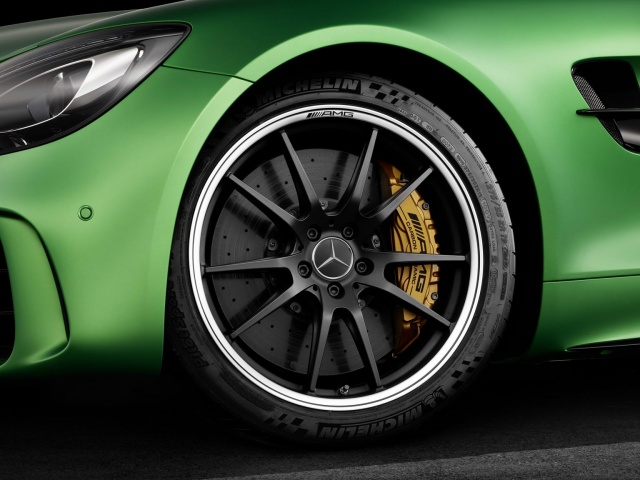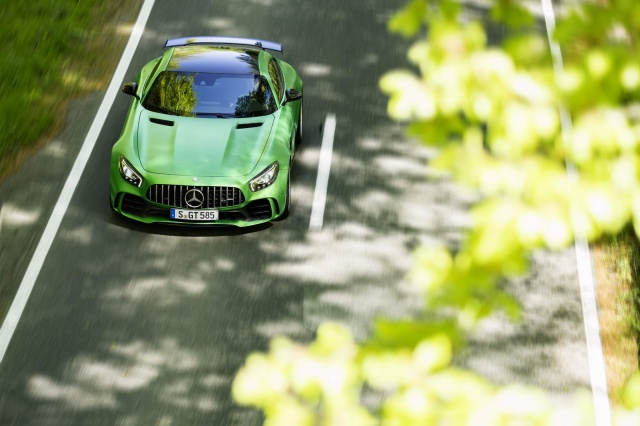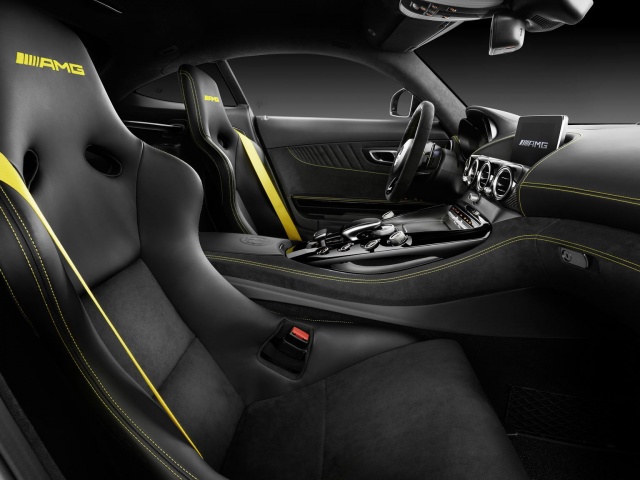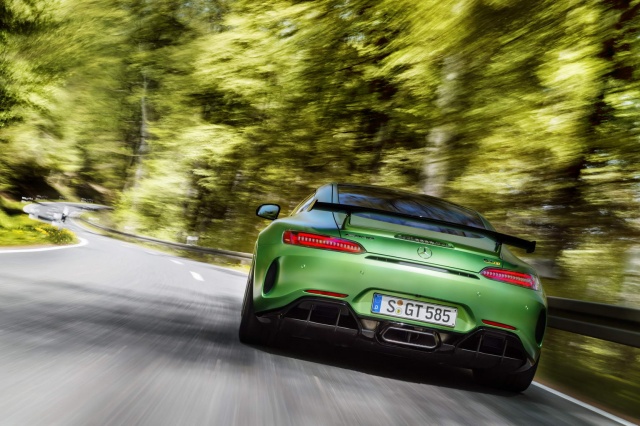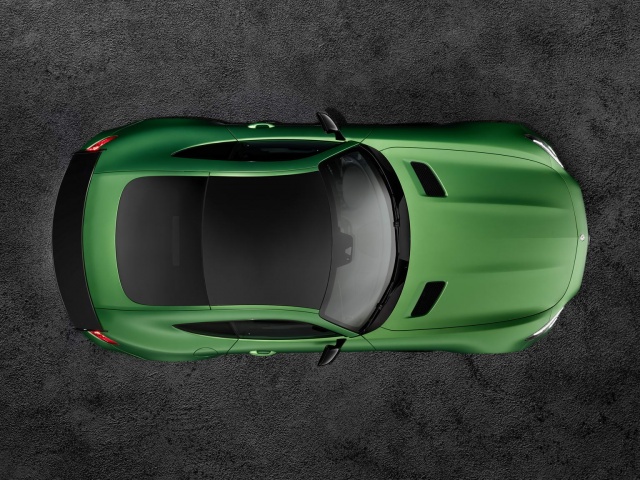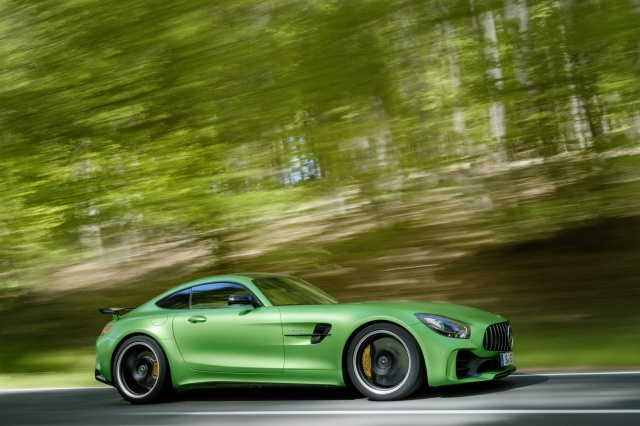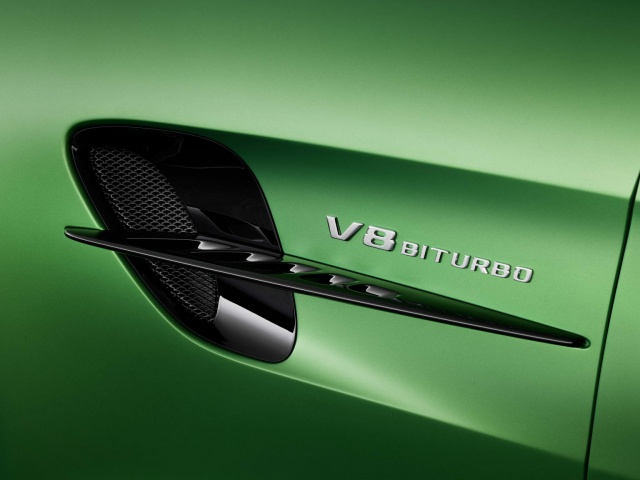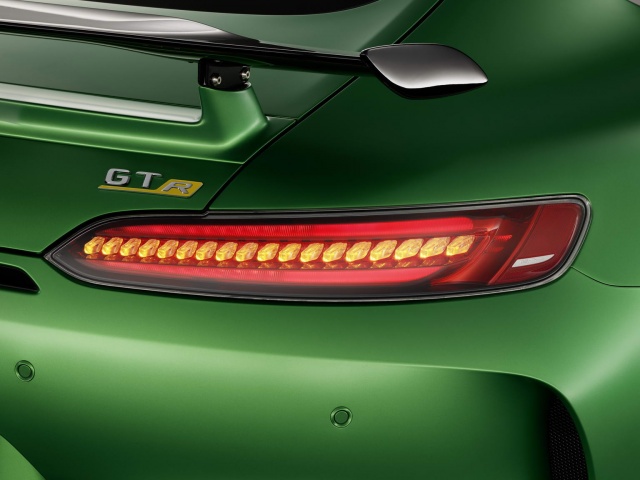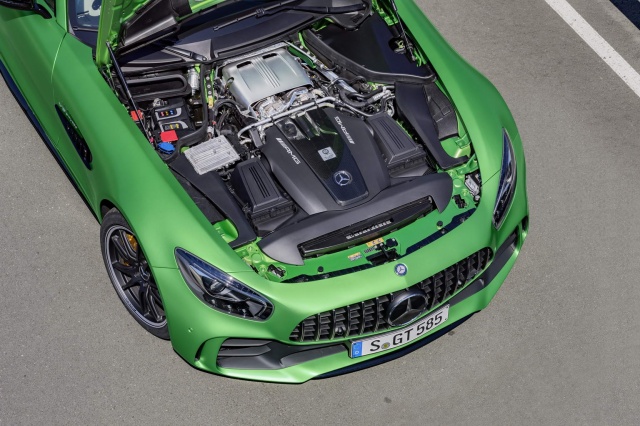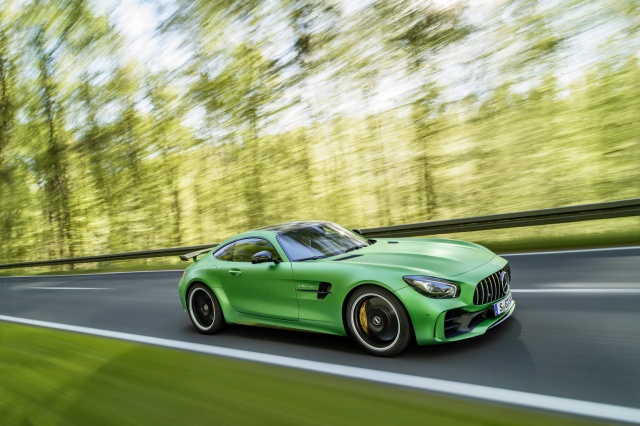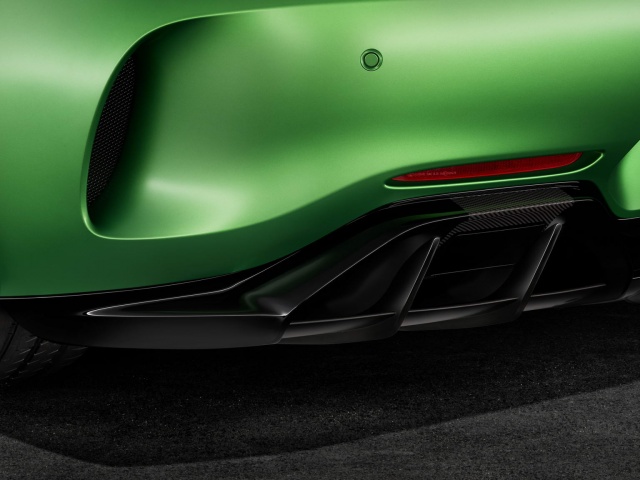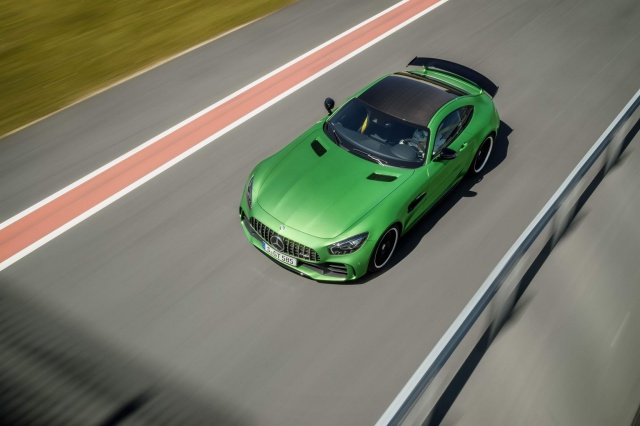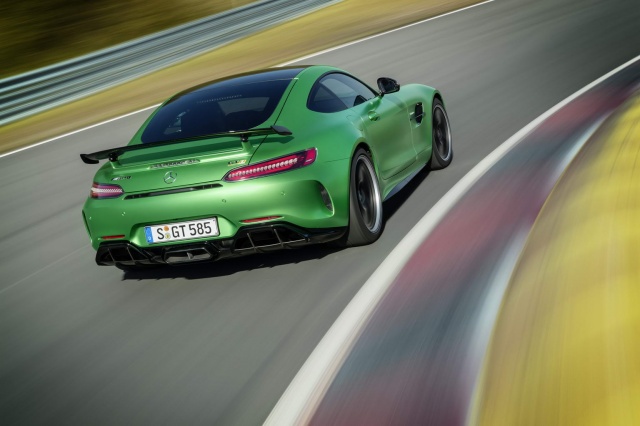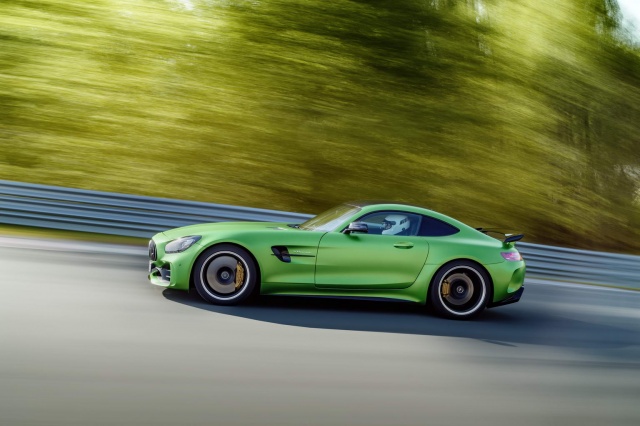What's the news?
Mercedes-AMG has unveiled its GT R supercar, the most extreme and track-focused road car the company has yet made. Its special paint grabs all the attention, but underneath are a wealth of changes, including uprated engine, chassis and new aerodynamics measures.
Exterior
Let's start with the obvious here: that retina-searing green paintwork is called 'AMG green hell magno', alluding to the Green Hell nickname given to the Nürburgring Nordschleife race track. Look beyond that and you'll spot the new Panamericana front grille, inspired by that of the Mercedes-Benz 300 SL, which won the 1952 Panamericana road race in Mexico. Below the grille is all new, with larger air vents, a wider appearance and 'Air Curtains' to help with the aerodynamics. The splitter below, meanwhile, reduces front axle lift. What you can't see is an active aerodynamic element made of carbon underneath the front of the car, which lowers automatically by a massive 40mm when the car is in Race mode - and driven over 80km/h. Apparently it reduces front end lift by 40kg at 250km/h while also reducing drag. More active aerodynamics can be found in the front cooling vents.
And there's more. The front wings are wider (the car is 46mm wider than before in total) and made of carbon; the bespoke lightweight alloy wheels measure 19 inches in diameter up front and 20 inches at the back; a gloss black insert in the side sill is complemented by black door mirror casings; and there's a carbon fibre roof. There's a lot to see at the back too, including a high-set fixed rear wing, the angle of which may be manually adjusted. It sits above a new rear bumper and a double diffuser. This has been closely designed with the new exhaust system to channel hot air surrounding the silencers in an advantageous way - hence the new slit in the bumper between the rear lights. The result of all this aerodynamic trickery is that the AMG GT R manages to have a lower coefficient of drag than the regular GT, yet can generate up to 155kg more downforce. Oh, and it looks stunning.
Interior
Given the extensive styling, aerodynamic and mechanical package changes it's surprising more hasn't been done to the cockpit of the AMG GT. The R model gains manually adjusted, lightweight, sports bucket seats as standard, trimmed in leather and Dinamica (like Alcantara), though buyers can have less-focused AMG performance seats at no cost. There are yellow highlights on the dials, optional yellow seatbelts and stitching and a new control below the four air vents for the AMG Traction Control system.
Mechanicals
Where to start? We could write a book on the changes that AMG has made to the twin-turbocharged 4.0-litre V8 petrol engine, but it boils down to more power and torque, higher turbo boost and quicker response. So, peak power is up from 510hp to 585hp, produced at 6,250rpm, while torque is now 700Nm available between 1,900- and 5,500rpm (the current Mercedes-AMG GT S 'makes do' with 650Nm). In a straight line, with the help of the faster-than-ever AMG Speedshift DCT dual-clutch transmission, that means the GT R can reach 318km/h and accelerates from 0 to 100km/h in 3.6 seconds (310km/h and 3.8 seconds for the GT S). Those gains may not sound significant, but every other aspect of the GT has been upgraded too and the GT R is 15kg lighter than the GT S.
So the suspension components are upgraded all-round, featuring uniball spherical bearings on the rear lower wishbones; there's fully (manually) adjustable coil-over suspension; three-mode AMG Ride Control adaptive damping; Michelin Pilot Sport Cup 2 tyres; active rear wheel steering; an electronically controlled limited slip rear differential; and a speed-sensitive, variable ratio steering rack. We tend to believe Mercedes when it claims it'll be good on track...
Anything else?
One final thing we alluded to above is the new AMG Traction Control system. This allows experienced drivers to switch off the ESP stability control system and then choose how much rear axle slip they're comfortable with, from nine discrete levels. How much fun?!



